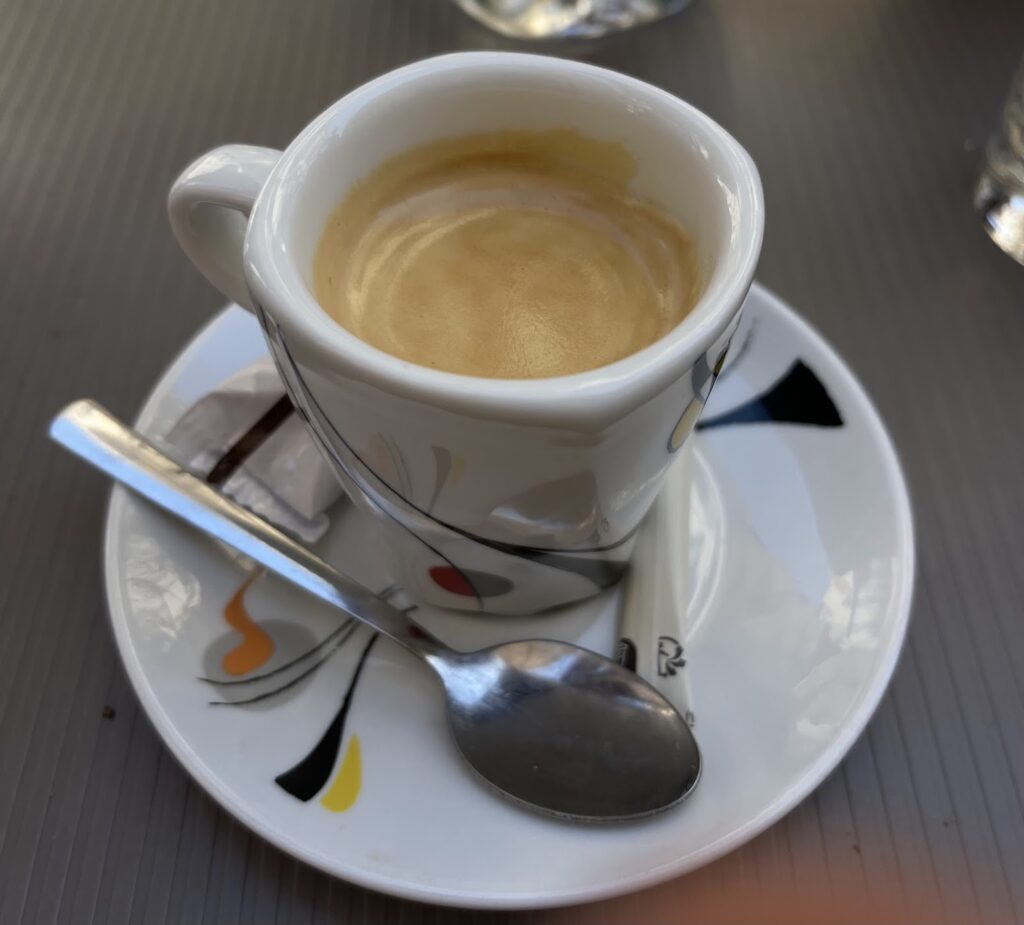By The DINKs
Coffee, often referred to as the “nectar of the gods,” has transcended its status as a simple beverage to become an international obsession. With a world as diverse as ours, it’s no surprise that coffee culture varies from region to region, resulting in a rich tapestry of flavors and traditions.
The history of coffee spans centuries and continents, evolving from its legendary discovery in Ethiopia to becoming one of the world’s most beloved beverages. Legend has it that a goat herder named Kaldi noticed his goats became energetic after eating berries from a certain tree. This discovery led to the cultivation of coffee plants and the spread of coffee drinking across Arabia and beyond by the 15th century. Coffeehouses emerged as centers of intellectual and social activity in cities like Constantinople, Venice, and London during the Age of Enlightenment. The Dutch brought coffee cultivation to Southeast Asia, while European colonial powers introduced it to the Americas, where it flourished in regions like Brazil and Colombia. The 20th century saw the rise of coffee as a global commodity, with advancements in transportation and technology facilitating widespread consumption. Today, coffee remains integral to cultures worldwide, enjoyed in various forms from espresso in Italy to filter coffee in Scandinavia, reflecting its rich and diverse history as a beverage that unites people across different cultures and continents.
Coffee is always apart of our travels and when we return home there is nothing like having a cup of coffee and reminiscing over our trip. Join us on a caffeinated journey as we explore some of our favorite coffees from around the world.
- Kona Coffee:
- Italian Espresso:
- Jamaican Blue Mountain:
- Costa Rican Tarrazú:
- Vienna Coffee:
- Café Cubano:
- Turkish Coffee:
- Greek Coffee:
Kona Coffee:
Kona coffee is often referred to as the “liquid gold” of Hawaii, and once you’ve tasted a cup, it’s easy to understand why. Grown exclusively on the fertile slopes of Mauna Loa, one of the world’s largest shield volcanoes, Kona coffee benefits from a unique combination of rich volcanic soil, high elevation, and a perfect balance of sunshine and afternoon rain. These ideal conditions create beans with a smooth, full-bodied flavor and low acidity—resulting in a brew that’s both rich and mellow, with subtle hints of chocolate, fruit, and spice.
A visit to the Big Island isn’t complete without touring one of the many coffee farms nestled in the Kona Coffee Belt. Walking through the lush rows of coffee plants, learning about the meticulous growing and roasting process, and sampling freshly brewed cups right where the beans are grown is an experience that connects you deeply to the land and the people who work it. Whether you’re a casual coffee drinker or a full-blown aficionado, savoring Kona coffee at its source is truly a highlight of any Hawaiian adventure.
Italian Espresso:
Italy is the birthplace of espresso, and coffee culture there is not just a habit—it’s a cherished ritual woven into daily life. Every morning, we found ourselves joining the rhythm of the locals by stopping at a neighborhood café bar for a quick shot of espresso. Standing at the counter, we’d sip the rich, velvety coffee alongside businessmen in suits, shopkeepers, and retirees, all pausing for a moment of connection before starting their day. There’s an unspoken camaraderie in those few minutes—no to-go cups, no laptops, just a shared appreciation for a perfect pour and a simple routine that speaks volumes about Italian life. Whether in bustling cities or quiet villages, these daily espresso breaks became one of our favorite ways to immerse ourselves in the culture.
Jamaican Blue Mountain:
Nestled high in the misty peaks of eastern Jamaica, Jamaican Blue Mountain coffee is grown at elevations of 3,000 to 5,500 feet, where cool temperatures, rich volcanic soil, and abundant rainfall create the perfect conditions for cultivating one of the world’s most prized coffees. Known for its exceptionally smooth and mild flavor, this coffee offers a bright, vibrant acidity, a subtle sweetness, and delicate notes of florals, herbs, and a hint of nuttiness. Its lack of bitterness and clean, velvety finish make it a favorite among coffee connoisseurs. Because it’s grown in such a limited region with meticulous quality control, Jamaican Blue Mountain beans are rare and highly sought after—often referred to as the champagne of coffees. Whether enjoyed black or lightly sweetened, every sip delivers a luxurious taste of the Caribbean.
Costa Rican Tarrazú:
In the lush, green highlands of Costa Rica, the Tarrazú region stands out as one of the country’s most renowned coffee-growing areas. Nestled in the mountains south of San José, this region benefits from rich volcanic soil, abundant rainfall, and high-altitude farms—ideal conditions that produce beans of exceptional quality. Tarrazú coffee is celebrated for its crisp acidity, smooth body, and vibrant citrus notes, often accompanied by subtle undertones of brown sugar and cocoa. Each sip feels like a burst of sunshine from the Central Valley, delivering a clean, invigorating finish that coffee lovers crave.
Visiting Costa Rica isn’t just about rainforests and ziplining—it’s also a sensory journey through the country’s coffee culture. From touring small family-run fincas to sipping espresso in charming mountain towns, you’ll gain a newfound appreciation for the care and craftsmanship behind each bean. And here’s a sweet bonus: don’t leave without picking up a bag (or three) of chocolate-covered espresso beans. These little bites of heaven pack a punch of flavor and energy, and they make perfect souvenirs—if you can resist eating them all before your flight home.
Vienna Coffee:
With its rich history and decadent blend of flavors, Viennese coffee is far more than just a beverage—it’s a cultural institution. In Vienna, coffee isn’t rushed or taken to-go; it’s savored, often with a slice of cake and a side of conversation. The classic Viennese coffee, typically a rich espresso crowned with a generous dollop of whipped cream, offers a delightful contrast of boldness and smooth indulgence. It’s a drink that feels both refined and comforting, much like the city itself.
This iconic drink embodies the spirit of Vienna: a city that celebrates life’s finer pleasures—symphonies in grand concert halls, intricate Baroque architecture, and timeless coffeehouse culture. Viennese cafés, many of which date back to the 18th and 19th centuries, have long served as gathering places for artists, intellectuals, and thinkers. Here, time slows down, and conversation flows as freely as the coffee. Whether you’re sipping in a chandelier-lit café or on a quiet cobblestone patio, enjoying a cup of Viennese coffee is more than a morning ritual—it’s a nod to a way of life that cherishes beauty, thought, and tradition in every detail.
Café Cubano:
“Cafecito,” also known as “Café Cubano,” may come in a small cup, but it packs a bold punch of flavor and cultural significance. This strong, concentrated espresso-like brew is a staple in Cuban households and communities, especially in places like Miami and Little Havana, where the aroma of freshly brewed Cafecito floats through the air like a warm invitation. Made with finely ground, dark roasted beans, the magic of Cafecito lies in its preparation. The first few drops of coffee are whipped with sugar to create “espuma,” a sweet, frothy layer that adds a touch of caramelized richness to every sip.
Though we haven’t had the chance to visit Cuba (yet!), indulging in a Cafecito is a must when you’re in South Florida. It’s more than just coffee—it’s a social ritual. Whether passed around a small group of friends from a window called a “ventanita” in Little Havana or sipped solo as a mid-afternoon pick-me-up, Cafecito offers a unique blend of sweetness, strength, and community. Don’t be surprised if you find yourself craving a second round—this tiny cup of coffee leaves a big impression.
Turkish Coffee:
Turkish coffee is a traditional method of coffee preparation that has deep cultural roots in Turkish and Middle Eastern societies. It is brewed using finely ground coffee beans, typically Arabica, boiled with water and sugar (optional) in a special small pot called a cezve or ibrik. The key characteristic of Turkish coffee is its finely ground coffee beans, almost powdery in texture, which are simmered rather than boiled to create a thick and strong brew. It is traditionally served in small cups without milk, often accompanied by a glass of water to cleanse the palate. The preparation and serving of Turkish coffee hold significant cultural importance, with customs such as fortune-telling from the coffee grounds left in the cup after drinking. Enjoying Turkish coffee is not just about the taste but also about embracing a ritual that has been passed down through generations, making it a cherished part of Turkish and Middle Eastern culture.
Greek Coffee:
Greek coffee, also known as “Ellinikós Kafés,” is a traditional method of coffee preparation that holds cultural significance throughout Greece and the Eastern Mediterranean. It is similar to Turkish coffee, brewed using finely ground coffee beans, water, and sugar (optional) boiled together in a small pot called a briki. The coffee is heated slowly until it foams, creating a rich and strong brew with a thick layer of sediment at the bottom. Greek coffee is typically served in small cups, and its preparation and consumption are steeped in tradition and social customs. It is enjoyed leisurely, often accompanied by conversation or while relaxing in a café. Greek coffee reflects the country’s cultural heritage, offering not just a beverage but a communal experience that connects people through shared moments and rituals.
Summary
As our coffee world tour comes to a close, we’ve tasted the diversity of flavors, aromas, and cultures that coffee has to offer. Whether you’re a coffee connoisseur or a casual drinker, exploring these global coffee varieties is an adventure worth embarking upon. So, brew a cup, savor the complexity, and let the world’s finest coffees transport you to far-off lands with every sip.
- Kona Coffee:
- Italian Espresso:
- Jamaican Blue Mountain:
- Costa Rican Tarrazú:
- Vienna Coffee:
- Café Cubano:
- Turkish Coffee:
- Greek Coffee:












Leave a Reply